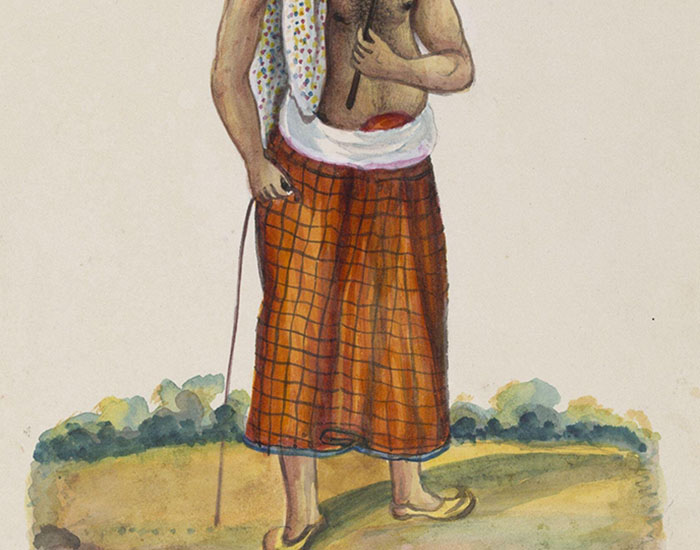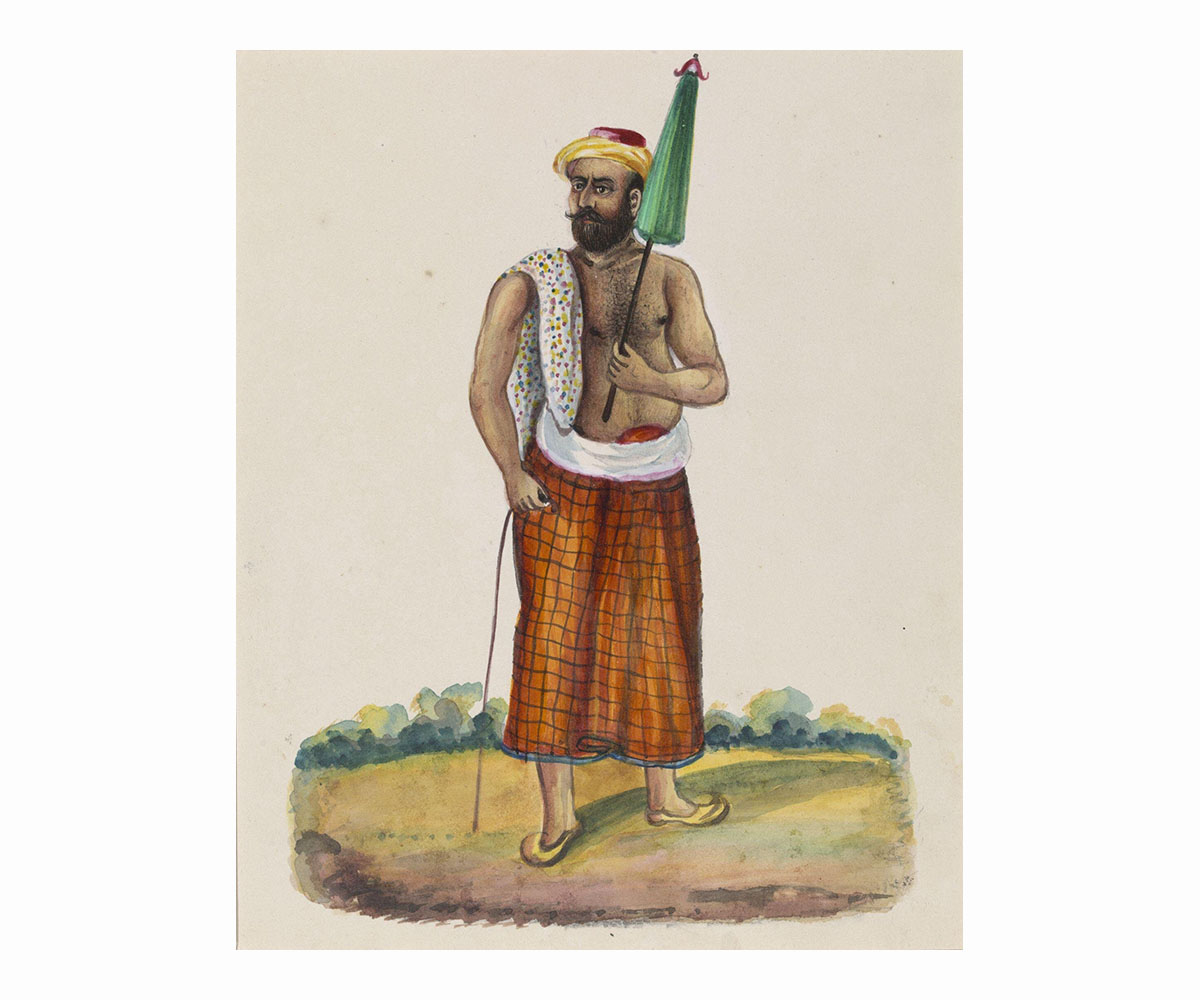
A tubular, sarong-like lower garment, the lungi is worn by men and women across India and parts of Southeast Asia, including Malaysia, Indonesia and Singapore. Its popularity can be attributed to its loose and comfortable fit, making it suitable for the hot and humid weather of these regions. Typically made of cotton and featuring checked patterns, the lungi is fastened at the waist and falls like a skirt till the heel of the wearer. The length can be adjusted easily by folding a section up and tucking it in at the waist.
There are two types of lungis: an open unstitched kind, resembling the dhoti, which has to be wrapped around the body, or the closed tube kind, which is knotted in the front. Unlike the dhoti, however, the drape of the lungi does not feature pleats. An average lungi measures approximately 2 metres in length and is between 1.15 and 1.25 metres wide.
Some scholars believe the lungi first arrived in Andhra Pradesh and Tamil Nadu between the sixth and the tenth century, through traders from Southeast Asia, from where it may have travelled east to parts of Odisha and Bengal, eventually becoming popular across the country. Other scholars have noted the presence of a similar, skirt-like garment in early nineteenth-century Company paintings featuring the Labbai, a community of Muslim traders, and speculate that this popular checked waist wrap — which was later also adopted by Hindus — went on to acquire the name “lungi” and travelled to other parts of Asia through Tamil migrants in the twentieth century.
Though widely worn in different parts of India, the lungi is popularly associated with a South Indian identity. This became a source of controversy in Maharashtra during the 1960s, when a regional political organisation began using the term lungi–wallah (“lungi wearer”) to refer to migrants from South India in a derogatory manner. Further, unlike the dhoti, the lungi was historically associated with non-dominant castes, though it is worn by men and women across castes today. The garment is known by different names in different parts of India and Southeast Asia, including tamba/tehmet in Punjab, kaili in Kerala and longyi in Myanmar.
First Published: April 21, 2022
Last Updated: July 26, 2023



